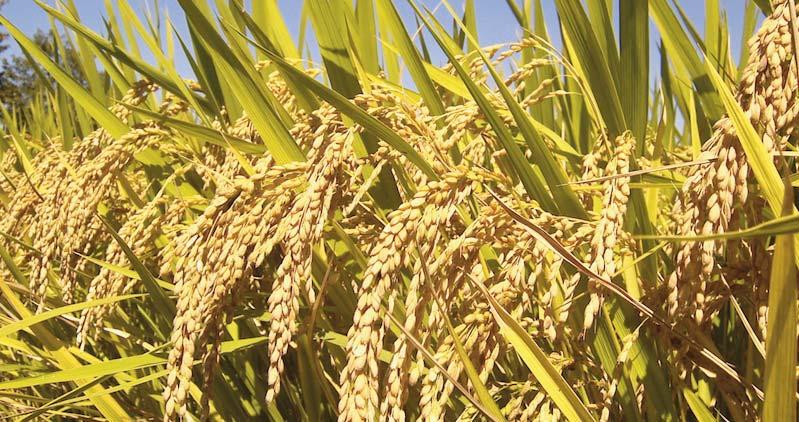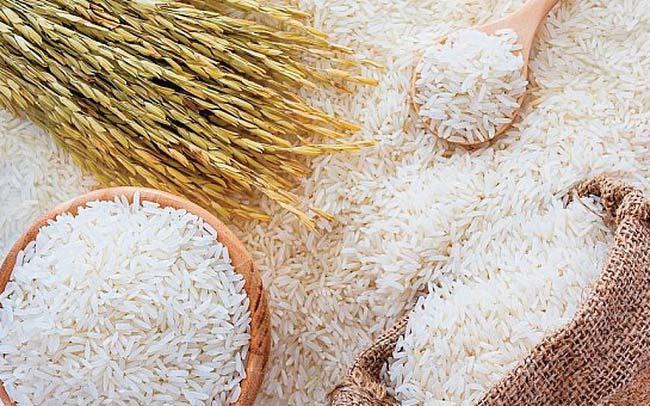
4 minute read
Pakistan harvested a record rice crop of 8.9 million tonnes in 2021-22
Rice occupies 2.5 million hectare that is 10.9% of the total cultivated area with production of 5.1 million tonnes of milled rice. In Pakistan’s agrarian economy rice plays multifarious roles. Firstly, it is a second staple food and contributes more than 2 million tonnes to our national food requirement.
Secondly, the rice industry is an important source of employment and income for rural people. Thirdly, it contributes to the country’s foreign exchange exchequer. For instance, during 19992000 about 2 million tonnes of rice worth 26 billion rupees was exported.
Advertisement
The barter trade on the Afghanistan border was in addition to this export. The significance of this commodity in our economy is evident from the above facts.
Therefore, it is imperative to focus on the efforts needed to further improve its competitiveness in the international market.
In Pakistan, rice is grown under diverse climatic and edaphic conditions. Basmati predominates in traditional rice.
In Swat (zone 1) at high altitude mountain valleys, temperate Japonica rice is grown. In the South of NWFP, Sindh, and Balochistan (zones 3 and 4) IRRI-type long-grain heat-tolerant tropical kinds of rice are grown.
Rice production in Pakistan
Pakistan harvested a record rice crop of 8.9 million tonnes in the 2021-22 marketing year, up from 8.4 million tonnes the prior year, according to a Global Agricultural Information Network report from the Foreign Agricultural Service of the US Department of Agriculture (USDA).

“New higher-yielding hybrid rice varieties, improved agronomic practices, and increased planting area, as farmers shift out of cotton, are factors driving the increased production,” the USDA said. The agency noted that the Pakistan government’s policy of ensuring rice growers had adequate inputs also contributed to the record production.
Meanwhile, the country’s rice exports in 2020-21 (November-October) were stagnant at 3.8 million tonnes, virtually unchanged from the previous year, the report said. Supply chain disruptions, shipping container shortages, and high transportation costs negatively impacted rice exports.
With this year’s record production adding more stocks, the total available supply is estimated to be 11 million tonnes, the USDA said. “Domestic rice consumption is 3.7 million tonnes, leaving an exportable supply of 7.3 million tonnes for 2021-22,” the USDA said. “This large surplus will provide an opportunity to significantly increase exports, but Pakistani rice will continue to face stiff competition from India and Southeast Asia suppliers.”
Rice export
Exports of Rice have shown remarkable performance during Q3 FY 2022. An increase in the export of Rice (1006) has been noticed. Pakistan's rice export share in Saudi Arabia and UAE is approximately one-fifth of total Rice export earnings.
The demand for Rice in these countries was mainly for Basmati Rice and very little or no demand for non-Basmati varieties. Pakistan’s main Rice export markets are China, Kenya, United Arab Emirates, Afghanistan, and Saudi Arabia. Pakistan’s non-basmati rice is largely exported to African countries, where it faces competition mainly from India in terms of crop availability and pricing. Basmati exports are still hovering a little over 1 MMT, just over 20 % of the total. In the past year, continuing devaluation of the Pakistani rupee against the dollar has helped Pakistani rice’s competitiveness in world markets. Farmers and SMEs in the sector are eligible to receive government-supported credit programs. In addition, the State Bank of Pakistan (SBP) provides loans to traders under an Export Financing Scheme (EFS). The only other major government involvement in the rice sector is R&D on rice varieties, extension services, and promoting Pakistan-branded basmati in overseas markets. With expectations for a growing exportable surplus, exports in 2022/2023 are projected at 5 MMT. Through the first three months of the 2021/22 local marketing year, the export pace was 13 % above the previous year, and the 2021/22 export forecast has increased to 4.5 million tons.
Prospects
Pakistan’s economy enjoyed a strong recovery following measures taken by the government to mitigate the adverse socio-economic impacts of the COVID-19 pandemic. Pakistan's GDP growth is projected to grow to 4% in FY2022 as the government applies measures to reduce the current account deficit and raise international reserves. During Q3 Jan-March FY 2021-22, economic indicators have mostly signaled positive economic momentum. On the production side, agricultural output, mainly Wheat, Sugarcane, Rice, and Cotton are expected to increase during 2022, reflecting better weather conditions. Similarly, large-scale manufacturing growth rose to 7.8 percent and remittances were USD 7.14 billion during Q3 FY 2022.
Recommendation for Enhancing Production
To meet the ever-growing domestic needs of food and enhance exports and achieve sustainability and stability of rice production the following research areas would receive priority

(a) Varietal Improvement
A quantum jump in rice production was achieved in the sixties by large-scale adoption of high-yielding semi-dwarf varieties. Since the development of this plant type, there is a marginal increase in rice production. To achieve another quantum jump in rice production, the following varietal improvement strategies are being proposed: i.Modification of plant architecture. ii.Development of hybrid rice technology. iii.Wide-hybridization.
(b) Soil and Nutrient Management
To develop appropriate management practices, and sustain soil fertility and high yields, it is vital to understand the kinetics, transformation, and interaction of essential nutrients in rice and other crops grown in rice-based cropping systems. The inclusion of legumes in the rice-based systems would be one of the options to sustain soil fertility. There is also a need to increase nutrient use efficiency, minimize fertilizer losses and increase the use of biofertilizers.
(c) Integrated Pest Management
I.Develop techniques for the conservation of biocontrol agents in rice and rice-based cropping systems.
II.Develop pesticide reduction technology for the management of insects, weeds, rodent pests, etc.
III.Screening and evaluation of rice germplasm under greenhouse and field conditions for resistance to major insect pests.
IV.Develop cultural control methods for different categories of pests.








